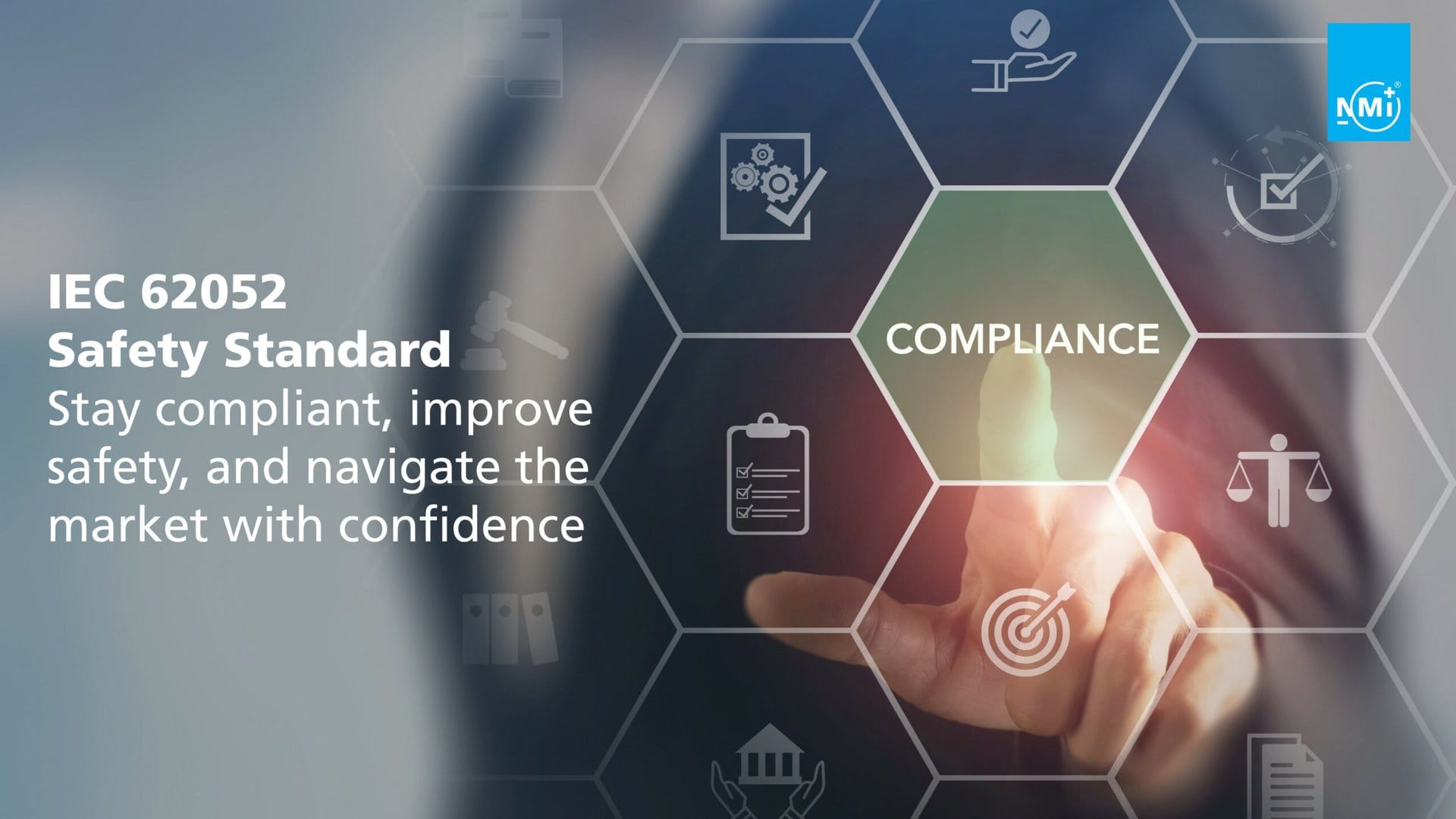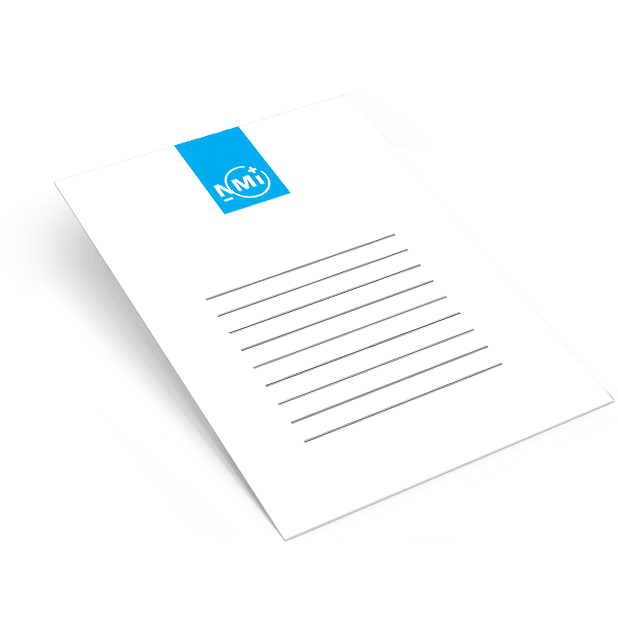
10 Dec Understanding the New IEC 62052-31: 2024 Safety Standard
Understanding the New IEC 62052-31: 2024 Safety Standard
10 December 2024
The landscape of electrical energy measurement is evolving, and the recently published IEC 62052-31: 2024 is a testament to this progress. Released in October 2024, this updated safety standard reflects the latest technological advancements and industry needs. For manufacturers of electricity meters and load control equipment, understanding these changes is crucial to ensuring compliance, improving safety, and maintaining competitive edge.
As contributors to the development of this standard, NMi is here to help you navigate these updates and their implications.
Important Changes in IEC 62052-31: 2024
The 2024 revision introduces several significant updates that impact manufacturers, designers, and stakeholders in the electrical energy measurement field:
- Expanded Voltage Scope
The standard now covers voltages up to 1500 V AC and 1500 V DC, enabling applications in higher-voltage scenarios. - Incorporation of DC Meters
Updated provisions for DC meters address the growing adoption of direct current systems in energy infrastructures. - Focus on Electric Vehicle Supply Equipment (EVSE)
For the first time, references to Measurement Category II applications for EVSE highlight the importance of electric mobility in metering. - Improved Protection Against Electric Shock
Enhanced Overvoltage Category (OVC) II and IV requirements align with real-world conditions, improving overall operational safety. - Battery Safety Requirements
Dedicated safety provisions for integrated power sources ensure compliance with modern metering systems’ needs. - Testing for Surge Protective Devices (SPD)
New protocols for SPD testing enhance reliability against power surges in challenging environments.
Implications for Manufacturers
These updates aim to make metering systems safer and more versatile, but they also pose challenges for manufacturers, including:
- Design Adjustments: Manufacturers must reassess their designs to meet extended voltage ranges and comply with updated insulation and clearance standards.
- Testing & Validation: The inclusion of SPD testing and battery requirements necessitates revisions to internal testing protocols and external certification processes.
- Market Readiness: With references to EVSE and DC metering, manufacturers catering to these markets must ensure seamless integration of these updates into their product lines.
How Manufacturers Can Adapt
To address these changes proactively, manufacturers should:
- Review Product Portfolios
Evaluate existing designs against the new requirements, paying close attention to high-voltage compliance, battery integration, and surge protection capabilities. - Develop Comprehensive Test Plans
Include the new requirements in your testing strategies to avoid delays in certification and market entry. - Engage with Experts
Collaborate with industry leaders, such as NMi, to better understand the nuances of the standard and implement changes efficiently. Our hands-on involvement in the standard’s development gives us unique insights to guide you through this transition. - Invest in Training
Equip your team with the necessary knowledge through tailored training programs like our upcoming session on 13 February 2025. This ensures your organization stays ahead of the curve.
NMi: Your Partner in Compliance
At NMi, we combine technical expertise with hands-on experience to simplify compliance. Our involvement in shaping the IEC 62052-31 standard ensures we can provide:
- Tailored Guidance: Practical insights to streamline product updates and testing.
- Training Programs: Comprehensive sessions to keep your teams informed and prepared.
- Ongoing Support: Expert advice to address challenges and keep you ahead of the competition.
Stay compliant, improve safety, and navigate the market with confidence. Contact us to discuss how we can support your journey under the new IEC 62052-31: 2024 standard.




